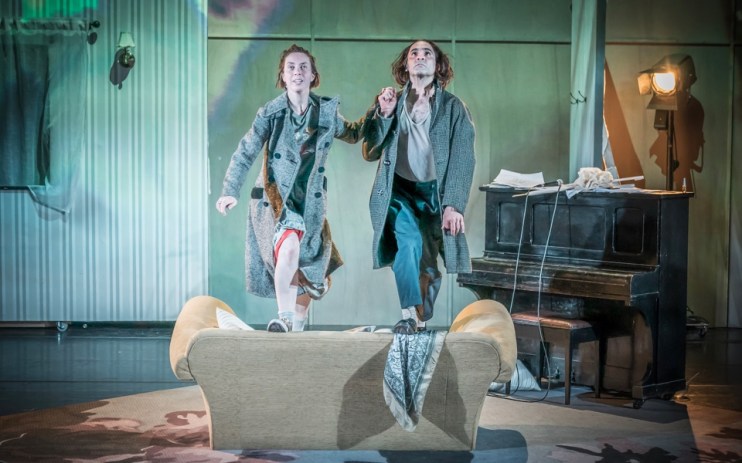The Two Character Play at Hampstead Theatre reinvigorates Tennessee Williams’ late work

There’s something comforting about the way Hampstead Theatre, always a bastion for experimental works that tease at the boundaries of mainstream theatre, has emerged from the pandemic. At a time when the pressure to stick on something that’s guaranteed to fill seats must be overwhelming, it instead decided to revive a tricky series of plays that have debuted at the theatre over its history.
December’s production of The Dumb Waiter could perhaps be branded a crowd-pleaser of sorts, but The Death of a Black Man, which opened in June, could not. Now we have a Tennessee Williams play, but not one of the ones people tend to know and certainty not one that people tend to like. Dismissed by both critics and audiences when it opened in 1967, The Two Character Play is one of his late works, written after the death of his life’s great love, in the midst of depression and alcoholism and drug abuse.
The result is predictably bleak, although that’s the only thing about it that’s predictable. It opens amidst what appears to be an anxiety dream. Two actors, siblings Clare (Kate O’Flynn) and Felice (Zubin Varla), are backstage at some ramshackle regional theatre, the curtain about to open on their latest play. The rest of the theatre company has abandoned them – “You and your sister are insane” reads the note – leaving the pair responsible for the sound and lighting as well as playing the roles of… Clare and Felice. Worse still, they don’t know the lines, the stage is only half built and the script isn’t finished.
Clare (the actor) is desperate to leave the theatre but her brother insists the show must go on, assuring her they can improvise the unfinished parts. She agrees on the condition she can make cuts on the fly, communicated by playing a C on the on-stage piano.
Just as Clare and Felice the actors are trapped on this nightmarish stage, Clare and Felice the characters are trapped in a nightmarish house in which their parents were killed in a murder/suicide. Both suffer from acute agoraphobia, their fragmented mental states mirroring those of the actors, who share the same dysfunctional co-reliance, veering from prickly intimacy to murderous hatred.
Director Sam Yates uses some devious methods to unsettle the audience. While the actors bicker about whether the play should go ahead, the theatre lights remain on, a fourth wall breaking trick recently used in the Almeida’s production of The Wild Duck.
Throughout the play O’Flynn and Varla flit between their English accents, used to play the actors, and an exaggerated southern drawl for the characters, although it becomes increasingly unclear which reality is being presented at any given time.
Clare’s propensity to hit that piano key each time the script goes in a direction she doesn’t like further disrupts any sense of narrative flow, with lines of dialogue ending mid-way through and conversations abruptly resetting. Adding to the surreal atmosphere is the use of live projection from an on-stage camera beamed onto the back wall, a technique beloved of superstar director Ivo van Hove, who I imagine would have an absolute field-day with this metatextual tangle of a play.
The uneasy humour of the early scenes, such as Clare’s dismay that the stairs she’s supposed to climb haven’t arrived, give way to something much darker. Heavily inspired by Williams’ relationship with his sister Rose, a schizophrenic who was lobotomised and spent her life in an institution, The Two Character Play is at its heart desperate a portrait of madness and despair, a reminder that we’re all of us trapped on our own little stages, struggling with life’s tape decks and lighting rigs and missing staircases in an attempt to hold it all together.
It’s not the finest of Williams’ plays, even if it was one he held dearly. With its navel-gazing fascination with acting and the act of creation, it has the air of an early play rather than a late one. But O’Flynn and Varla sell both of their roles brilliantly and Yates’ direction, both deft and dramatic, lifts The Two Character Play from an interesting curio to a genuinely powerful piece of theatre.
